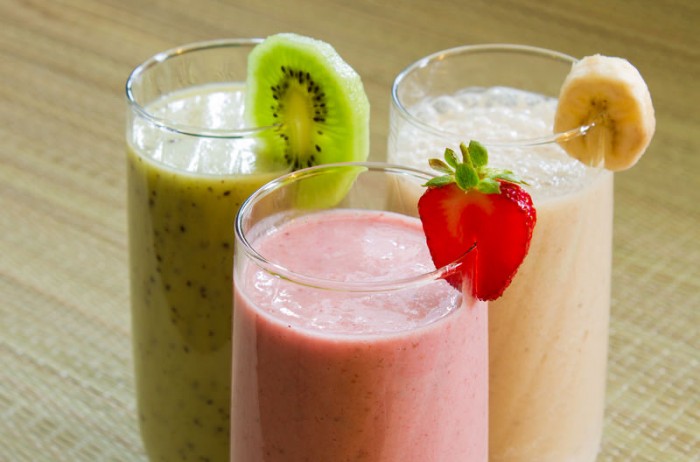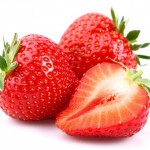Why not try adding some wholegrain cereal or oats to your smoothie for some extra fibre?
This smoothie has a thick texture, so just add more milk if you prefer more liquid.
Skills Check
Follow a recipe; follow food safety & hygiene rules; cut using bridge/claw technique safely; use weighing scales; use a jug to measure liquids; tidy away.
Allergens
Milk | Gluten
(Please note the allergens listed are indicative only. Allergens vary depending on brand; check the labels on the products you use.)
Equipment
Knife, chopping board, spoon, weighing scales, measuring jug, blender.
Ingredients (serves 4):
- 100 g porridge oats
- 450 ml low fat yogurt
- 240 ml semi skimmed milk
- 400 g hulled and washed strawberries
- 1 banana
Method
- Place the porridge oats in a blender and process until they are finely ground - this step is essential so that your smoothie has a fine texture.
- Peel the banana and chop into small pieces.
- Wash and remove the green tops from the strawberries.
- Put all ingredients into a jug and blend.
- Pour into four glasses, serve with a straw and enjoy!
So thinking about a strawberry smoothie ...

Strawberries are an excellent source of vitamin C and some important minerals. They are low in calories, high in fibre and contain cancer-fighting compounds called bioflavonoids.
Milk and yoghurt are excellent sources of calcium, and good sources of Vitamin D for strong teeth and bones. They are also good sources of protein.
Nutritional Information
| - | Energy | 1059KJ / 251kcal | 13% |
| Low | Fat | 4.4g | 6% |
| Low | Saturates | 1.9g | 10% |
| Med | Sugars | 21.7g | 24% |
| Low | Salt | 0.3g | 5% |
per serving
% of an adult's reference intake
Typical values per 100g: Energy 318KJ / 75kcal
Notes
A traffic light system is used on nutrition labels to make it easier to see which foods and drinks are lower in calories, fat, sugar and salt. Try and choose more ‘greens’ and ‘ambers’ and fewer ‘reds’, and stick to smaller portions of ‘reds’.
Just because a recipe or a food has a red traffic light doesn’t mean you shouldn’t eat it. Understanding why a food or recipe might have a red light can be helpful. For example oily fish is high in total fat and so any recipe containing oily fish is likely to be ‘red’ for fat. But it is recommended that we eat oily fish at least once a week because the type of fat it contains is beneficial for our health.
% Reference Intakes are also shown. Reference Intakes are guidelines about the approximate amount of particular nutrients and energy required for a healthy diet (based on an average-sized woman doing an average amount of physical activity). Most children will require less than these Reference Intakes. The contribution of one serving of a food or drink to the Reference Intake for each nutrient is expressed as a percentage.




